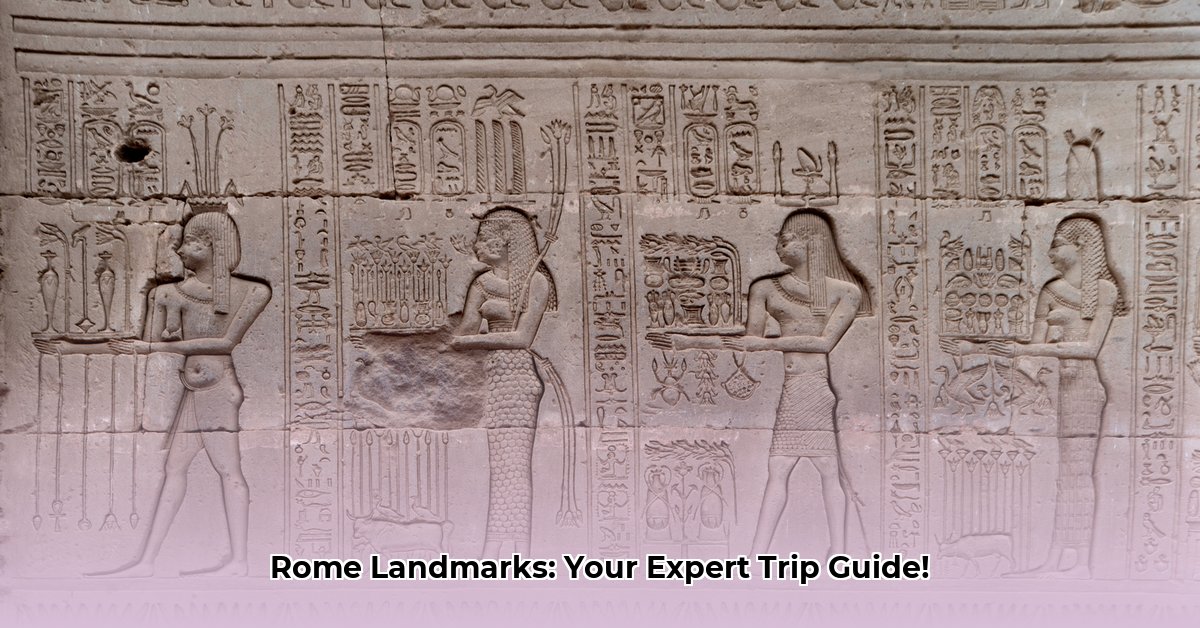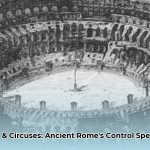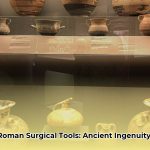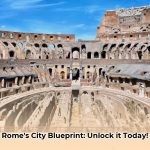Rome, the Eternal City, is an unparalleled testament to human history, a sprawling open-air museum where millennia of civilization unfold around every corner. To truly maximize your experience and delve deep into its profound past, strategic planning is not just beneficial—it’s essential. This comprehensive guide, crafted by an expert editor and content quality analyst, offers key insights and actionable strategies to navigate Rome’s iconic ancient landmarks and uncover its lesser-known treasures, ensuring an unforgettable and richly detailed cultural exploration. You can discover more at these ancient sites.
Rome’s Enduring Icons: Stepping into the Heart of Antiquity
When the grandeur of ancient Rome landmarks comes to mind, certain monumental structures immediately captivate the imagination. These iconic sites are not merely ruins; they are powerful conduits to understanding the daily life, immense power, and unparalleled engineering prowess of the Roman Empire.
The Colosseum: A Quintessential Symbol of Imperial Might
The Colosseum, formally known as the Flavian Amphitheater, stands as Rome’s most enduring and recognizable symbol. Completed in 80 AD under Emperor Titus, this colossal amphitheater, capable of seating 50,000 spectators, once resonated with the roars of crowds witnessing gladiatorial contests, elaborate animal hunts involving exotic beasts, and even simulated naval battles known as naumachiae in its arena. Its intricate design, utilizing concrete, tufa, and travertine, reflects advanced Roman engineering. Beyond its original purpose, the Colosseum has endured as a quarry, a fortress, and a religious shrine, each layer of history adding to its profound significance. It is a UNESCO World Heritage site and an absolute must-see for anyone seeking to grasp the scale of Roman spectacle.
- Expert Tip: To fully appreciate the Colosseum’s complex history, consider booking a guided tour that includes access to the underground hypogeum and the upper tiers. This provides unparalleled insight into the elaborate machinery, animal cages, and staging areas that brought the spectacles to life, offering a perspective inaccessible with standard tickets. Always pre-book your tickets online, often weeks or months in advance, to secure timed entry and bypass notoriously long queues.
The Roman Forum and Palatine Hill: Echoes of Governance and Grandeur
Adjacent to the Colosseum, the Roman Forum sprawls across a valley, serving for over a millennium as the vibrant political, religious, and commercial heart of ancient Rome. Walking amidst its scattered ruins—including the Curia Julia (Senate House), the Temple of Saturn, the Arch of Septimius Severus, and the House of the Vestal Virgins—you are treading on ground where senators debated, emperors triumphed, and daily life unfolded. The forum was systematically planned through a deliberate landfill project, transforming marshes into the central showpiece of the Roman Republic and Empire.
Overlooking the Forum, Palatine Hill is one of Rome’s legendary Seven Hills and is traditionally considered the birthplace of the city, where Romulus and Remus were said to have been nursed by a she-wolf. Later, it became the exclusive residential area for emperors, with luxurious palaces such as the House of Augustus and Domitian’s Palaces. From its summit, visitors are treated to breathtaking panoramic views of the Forum, Colosseum, and Circus Maximus, offering a spatial understanding of the ancient city’s layout.
- Strategic Approach: Given the complexity and sheer size of the Roman Forum and Palatine Hill, a knowledgeable guide is invaluable. Without one, the ruins can appear as mere rubble. Many Colosseum tickets include access to both the Forum and Palatine Hill, making it a cost-effective and cohesive cluster of visits. Allocate at least 3-4 hours for a comprehensive exploration of this archaeological park.
The Pantheon: An Enduring Architectural Masterpiece
Prepare to be deeply impressed by the Pantheon, arguably the best-preserved building from ancient Rome. Constructed by Emperor Hadrian between 119 and 128 AD on the site of an earlier temple commissioned by Marcus Agrippa, its defining feature is its colossal unreinforced concrete dome, the largest of its kind for nearly two millennia. The vast oculus, a 27-foot-wide opening at the dome’s apex, remains its sole source of natural light, creating an ethereal, almost celestial atmosphere as sunlight or even rain streams into the interior.
Originally a temple dedicated to all Roman gods, it was converted into a Christian church, Santa Maria ad Martyres, in the 7th century, a conversion that significantly contributed to its remarkable preservation. Since the Renaissance, it has served as a revered burial site for notable figures, including the artist Raphael and Italy’s first king, Victor Emmanuel II. The Pantheon’s innovative design profoundly influenced subsequent Western architecture, inspiring domes from Florence Cathedral to St. Peter’s Basilica.
- Visitor Insights: The Pantheon offers free admission, which contributes to its perennial popularity. To experience it with a modicum of serenity, aim for an early morning visit, immediately after opening, or a late afternoon visit, closer to closing time. Observe the intricate marble floor, which remains largely original, and the impressive bronze doors, among the few ancient Roman examples still in situ.
Beyond the Postcards: Unearthing Rome’s Hidden Archaeological Gems
While Rome’s major ancient Rome landmarks are undeniably compelling, the city also boasts numerous equally fascinating, yet often less crowded, historical sites. Venturing beyond the well-trodden tourist paths offers unique and immersive insights into Roman history, allowing for a deeper connection with the past.
Domus Aurea: Nero’s Opulent and Controversial Retreat
Delve into the extravagant world of Emperor Nero by exploring the Domus Aurea, his infamous “Golden House.” This sprawling imperial palace, built in the heart of Rome after the Great Fire of 64 AD, covered vast tracts of land, featuring elaborate gardens, an artificial lake (where the Colosseum now stands), and lavish recreational spaces. Its revolutionary architectural designs, including an octagonal dining hall believed to have a rotating ceiling, showcased Nero’s ambitious artistic vision and immense power. The palace’s interior was adorned with frescoes by notable artists like Famulus, gold leaf, and intricate mosaics, inspiring the “grotesque” style of Renaissance art upon its rediscovery. The Domus Aurea stands as a poignant example of damnatio memoriae, the Roman practice of erasing a public figure’s legacy, as subsequent emperors intentionally buried or dismantled parts of it.
- How to Book Your Domus Aurea Visit: Due to the delicate nature of the site and ongoing restoration efforts, access to the Domus Aurea is highly restricted. General admission is not available; visits are exclusively by guided tour, often incorporating cutting-edge virtual reality (VR) headsets that digitally reconstruct the palace in its former splendor. These immersive experiences bring the opulent halls and intricate frescoes vividly to life, offering a unique perspective on Nero’s vision.
- Research Reputable Tour Operators: Begin by exploring official and reputable websites offering Domus Aurea guided tours. For example, the Parco archeologico del Colosseo’s official site or trusted third-party cultural tour providers are good starting points.
- Check Availability Well in Advance: Tours are typically available only on weekends (Fridays to Sundays) and require significant advance booking. Slots are highly limited and fill quickly, especially during peak seasons. Booking several weeks, or even months, ahead is crucial to avoid disappointment.
- Select and Confirm: Once you identify a suitable tour, follow the website’s instructions to reserve your spot. Ensure you receive a confirmation email or ticket voucher containing essential details regarding the meeting point, tour duration, and entry procedures.
- Prepare for the Experience: Arrive promptly at the designated meeting point. Wear comfortable, sturdy shoes, as the site involves walking on uneven and potentially damp archaeological surfaces. The temperature underground can be cooler than outside, so dress appropriately.
Rome’s Ancient Catacombs: Journeys into Early Christian Beliefs
Descend beneath the bustling streets to explore Rome’s ancient catacombs, vast subterranean burial sites that offer a compelling glimpse into the lives and faith of early Christians and Jews. Dating from the 2nd to the 5th centuries AD, these networks of narrow passages and burial chambers, carved out of volcanic tuff rock, served as both interment grounds and places of worship during periods of intense persecution. The walls and ceilings, adorned with early Christian symbols, frescoes, and artwork, provide invaluable historical records of their beliefs, practices, and artistic expressions. Each catacomb offers a unique perspective:
- Catacombs of Callixtus: One of the most important and largest, serving as the burial place for several popes and martyrs.
- Catacombs of Priscilla: Known as the “Queen of the Catacombs,” it contains some of the earliest Christian art, including potential depictions of the Virgin Mary and the Last Supper.
Catacombs of Domitilla: The oldest and largest, featuring a beautiful basilica and a rich collection of frescoes.
Visitor Notes: Guided tours are mandatory for catacomb visits, ensuring respectful transit through these fragile historical sites. The atmosphere can be cool and damp year-round, so a light jacket is advisable. Photography is usually restricted to protect the delicate frescoes.
Ostia Antica: A Preserved Port City Frozen in Time
For a truly immersive and less crowded experience, consider a day trip to Ostia Antica, the remarkably well-preserved ancient port city of Rome. Located approximately 30 minutes by train from central Rome, Ostia (meaning “mouth” in Latin, referring to its position at the mouth of the Tiber River) served as Rome’s primary commercial hub for centuries.
Wandering through its remarkably intact houses, multi-story apartment buildings (insulae), bustling shops (including a thermopolium, an ancient fast-food stand), public baths, a theatre, and even Europe’s oldest known synagogue site, feels like stepping directly into daily life centuries ago. Unlike Pompeii, Ostia Antica was not destroyed by a catastrophic event but was gradually abandoned due to silting of the Tiber and economic decline, leading to its exceptional preservation.
- Day Trip Essentials: Allocate at least half a day, ideally a full day, for Ostia Antica. Wear exceptionally comfortable walking shoes, as you’ll cover considerable ground on cobbled streets. Pack water and snacks, as facilities within the archaeological park are limited. The site’s less crowded nature allows for a more intimate and reflective exploration than the intense atmosphere of the central Roman Forum.
The Baths of Caracalla: A Glimpse into Roman Leisure
While the Colosseum speaks of spectacle, the Baths of Caracalla showcase the Roman obsession with well-being and sociality. Inaugurated in 216 AD by Emperor Caracalla, this immense complex was one of the largest public baths in the Roman Empire, accommodating up to 1,600 bathers at a time. Beyond bathing, it served as a sprawling social center, complete with gymnasiums, libraries, gardens, and art galleries.
Though stripped of their ornate marble and sculptures over centuries (many famous pieces like the Farnese Hercules and Farnese Bull now reside in museums), the towering brick walls and grand vaulted structures still convey the sheer scale and architectural ambition of the complex. Visitors can explore the remains of the frigidarium (cold room), tepidarium (warm room), and caldarium (hot room), and even venture into the sophisticated underground network where slaves operated the furnaces to heat the water. Contemporary open-air opera performances are often held here in summer, offering a unique blend of ancient setting and modern art.
- Planning Insight: The Baths of Caracalla are less congested than the main sites, offering a more tranquil exploration. They are easily accessible from the Circus Maximus. Guided tours or audio guides can greatly enhance understanding of the complex’s original functions and impressive engineering.
Crafting Your Roman Adventure: Key Planning Steps for a Seamless Trip
A well-organized itinerary dramatically enhances your enjoyment of ancient Rome landmarks. From packing the right gear to understanding optimal visiting times, a solid plan is your best companion for a smooth, enriching journey.
Strategic Considerations for a Rewarding Visit
- Prioritize Your Must-Sees: List the historical sites you absolutely cannot miss, then be realistic about what you can comfortably see given your available time and energy levels. Rome is vast; attempting to see everything in a short period leads to exhaustion, not enjoyment.
- Book All Tickets in Advance: This is the single most crucial step for popular attractions like the Colosseum, Vatican Museums, and Domus Aurea. Do this weeks, if not months, ahead, especially for peak seasons (spring, summer, early fall). This guarantees entry and allows you to bypass notoriously long ticket lines, saving invaluable vacation time and reducing stress.
- Optimize Your Timing: To avoid the worst of the crowds, aim to visit popular outdoor sites early in the morning, right at opening, or later in the afternoon, closer to sunset. Indoor attractions might be less crowded during lunchtime. For example, arriving at the Pantheon before 9:00 AM or after 5:00 PM can result in a more serene viewing experience.
- Embrace Rome’s Walkability: Familiarize yourself with Rome’s efficient public transportation system (buses, metro, trams), but often, walking is the best way to serendipitously discover hidden piazzas, charming alleyways, and unexpected ancient fragments embedded in modern buildings. Many key sites are within reasonable walking distance of each other.
- Pack Smart: Comfortable, supportive footwear is non-negotiable. You will be walking extensively on uneven cobbled streets, ancient flagstones, and potentially slippery archaeological terrains. During warmer months, carry a reusable water bottle (Rome has numerous public fountains, or nasoni, providing fresh drinking water) and wear sunscreen and a hat.
Planning at a Glance: Essential Guide to Key Sites
| Landmark | Key Highlights | Best for… | Practical Tips & Considerations |
|---|---|---|---|
| The Colosseum | The largest ancient amphitheater; gladiator games, public spectacles. UNESCO site. | Iconic experience, understanding Roman entertainment, grand scale architecture. | Pre-book tickets online well in advance (essential). Consider a “skip-the-line” tour. Combine with Roman Forum & Palatine Hill ticket. Allow 2-3 hours. Best visited early morning or late afternoon to avoid peak crowds and heat. |
| Roman Forum & Palatine Hill | Heart of ancient Rome’s political, religious, and commercial life; imperial palaces, temples, basilicas. Birthplace of Rome legend. | Deep dive into daily Roman life, political history, archaeological exploration, panoramic views. | Guided tour highly recommended due to lack of extensive signage; narratives bring ruins to life. Included with Colosseum ticket. Wear comfortable shoes for uneven terrain. No shade, so bring water and sun protection in summer. Allow 3-4 hours. |
| The Pantheon | Perfectly preserved ancient temple with an unsupported concrete dome and oculus; Raphael’s tomb. | Architectural marvel, understanding Roman engineering, serene contemplation (if uncrowded). | Free entry, so expect crowds. Best visited right at opening (9:00 AM) or an hour before closing (often 5:00 PM or later). Dress respectfully (shoulders/knees covered) as it’s an active church. Limited seating inside. Allow 30-60 minutes. |
| Domus Aurea | Nero’s opulent “Golden House”; innovative architecture, frescoes, virtual reality experience. | Unique immersive historical experience, understanding controversial imperial legacies, architectural innovation. | Highly restricted access; guided tours only. Booking weeks/months in advance is crucial. Tours typically only Fri-Sun. Wear comfortable shoes; uneven/damp surfaces. Can be cooler underground. VR headsets often included. Allow 1.5-2 hours. |
| Rome’s Catacombs | Subterranean burial networks for early Christians; ancient art, historical insights into persecution and faith. | Understanding early Christianity, unique underground exploration, somber reflection. | Mandatory guided tours. Specific opening hours vary by catacomb (e.g., Callixtus, Priscilla, Domitilla). Dress respectfully. Can be cool and damp; bring a light jacket. Photography often prohibited. Allow 1-1.5 hours per catacomb. |
| Ostia Antica | Remarkably preserved ancient port city; houses, shops, baths, theatre. | Stepping into daily Roman life, less crowded archaeological site, detailed city layout. | Requires a half-day to full-day trip (easily accessible by train from Rome). Wear incredibly comfortable walking shoes. Bring water and snacks, as facilities are limited within the park. Provides a more intimate experience than central sites. Allow 4-6 hours. |
| Baths of Caracalla | Massive imperial bath complex; social hub, impressive scale, stunning ruins. | Understanding Roman public life and leisure, grand engineering, historical atmosphere. | Less crowded than the Colosseum/Forum. Easily accessible |










